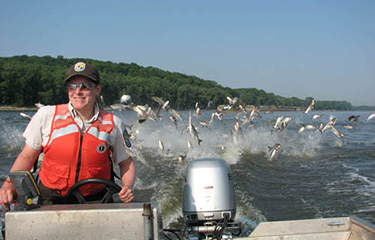Officials in the U.S. state of Illinois have unveiled a new name for Asian carp, an invasive species that is threatening to enter the Great Lakes in an effort to make it more appealing to consumers.
Announced on 22 June, the new name is “copi,” which is short for copious – a suitable word for the fish brought to U.S. fish farms in the 1970s to help control algae blooms. The fish – bighead carp, silver carp, and grass carp – were lumped together under the Asian carp name.
However, the name carp is often associated with bottom-feeding fish, and a worse flavor. State officials and chefs say that belies the fact that these fish are lighter-tasting and versatile, which led to the rebranding effort that started in February 2021.
Nick Adam of Span Studio, the Chicago, Illinois-based group that helped come up with the copi name, said 85 percent of the more than 350 Illinois residents surveyed for the project had heard of the fish. However, just 5 percent had tried it.
“It has all the characteristics people love about fish they eat, but few people know this,” Adam said.
The rebrand would not be the first time a fish has been renamed in an effort to gain broader appeal. Patagonian toothfish is now called Chilean sea bass, and slimehead is now known as orange roughy.
If a consumer market is established for the fish, it will have plenty of supply. Shortly after the carp were introduced in the U.S., they breached farms and entered waterways and began to dominate ecosystems. Illinois Department of Natural Resources Assistant Chief of Fisheries Kevin Irons said the carp species now make up as much as 70 percent of the biomass in the Illinois River.
The renaming adds to past efforts to turn the invasive species into a marketable commodity. In 2020, a Canadian company launched a brand of dog food that uses the carp. And during bait shortages in U.S. and Canadian lobster fishery, the fish was presented as a solution to the shortage – a solution Canada ultimately nixed.
Now officials are hoping this latest effort is the key to finally combating the invasive species.
“What a grand success it would be to reduce that to just 10, 15, or 20 percent, and we have demonstrated with agency efforts that this is possible,” Irons said in a video statement.
In a video announcing the new name, several Chicago-area chefs discussed how they used the fish in their dishes. Some even discussed using it as a substitute for ground beef in burgers, meatballs, and sauces.
To help with the name change and promote consumption of the fish, the department announced the launch of a #choosecopi social media campaign.
Photo courtesy of the U.S. Fish and Wildlife Service







